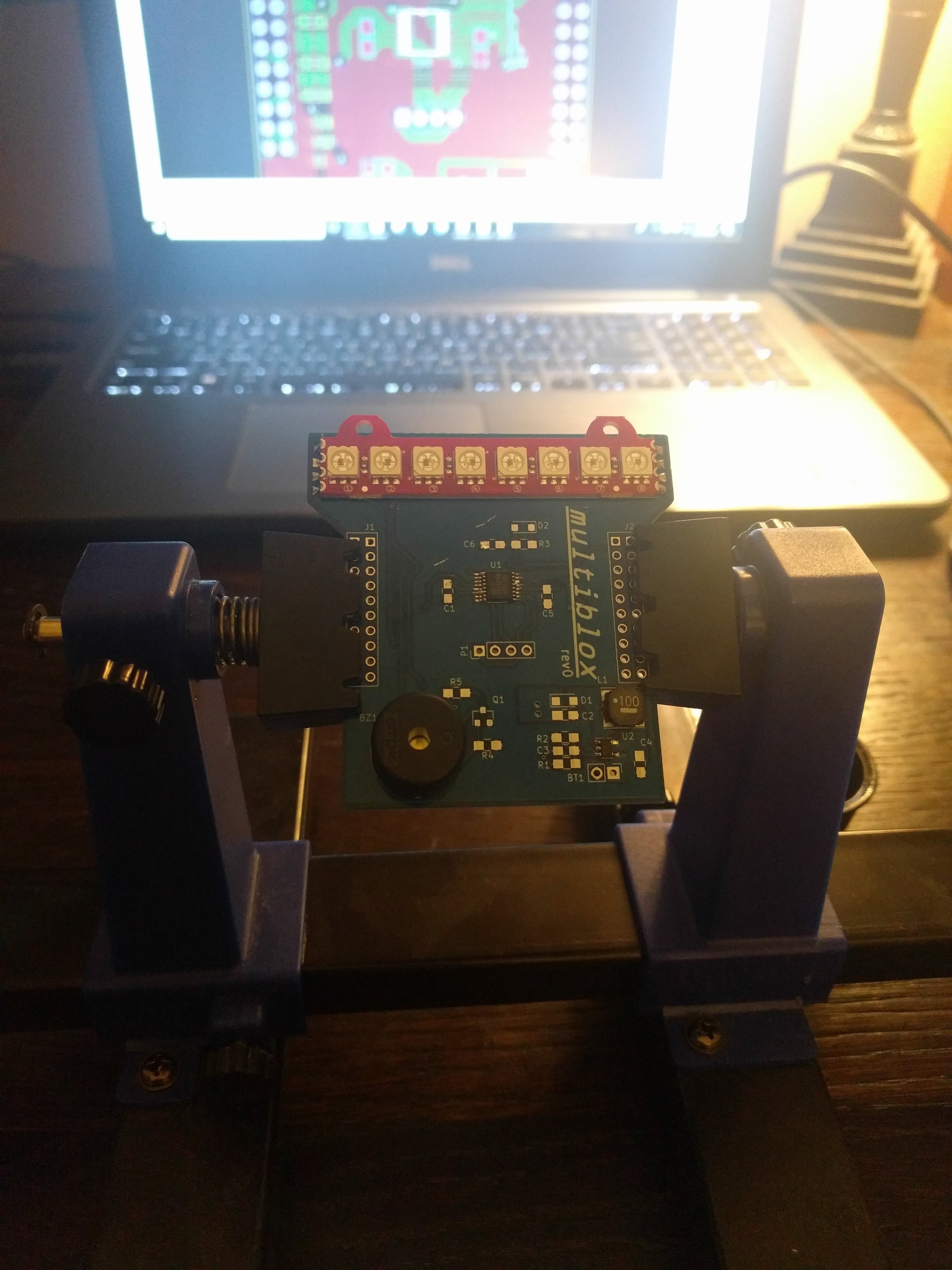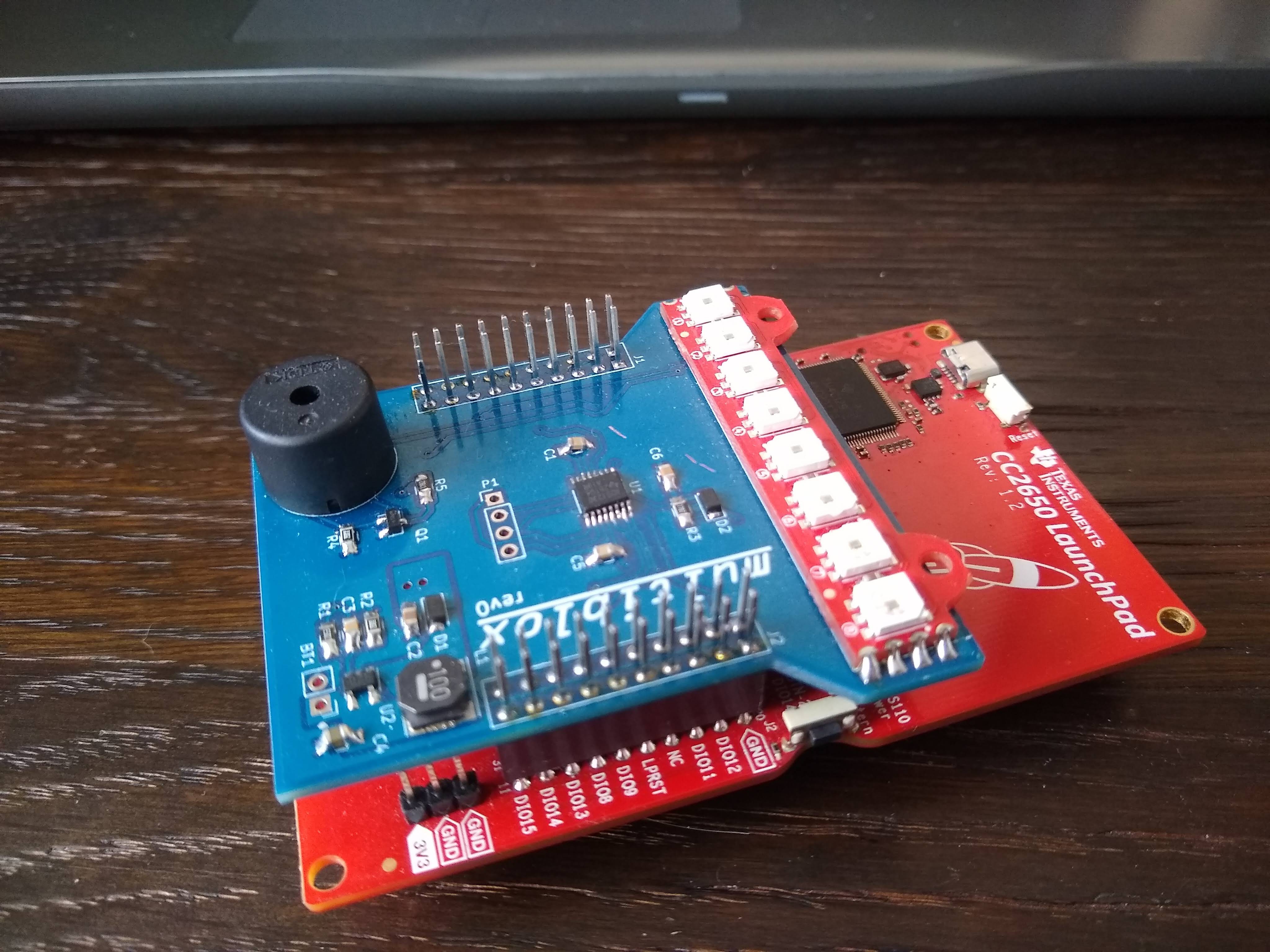The OpenScale turned out to be exactly the off-the-shelf product we needed to quickly make a connected Jenga game. It's had some downsides to it, though, that we've been wanting to bypass for a little while now.
These are:
- It requires a physical USB connection for power and data
- It requires a full-sized PC or laptop (or equivalent) to play a game
- It offers no feedback at the tower, all feedback comes from the terminal or PC speakers
- The total response time of the game + hardware can sometimes be laggy or slow
With these problems in mind, I started to make a new development board that would replace the OpenScale. I wanted to run the game code either A) on a Bluetooth connected phone nearby the tower or B) the development board itself. I had little to no familiarity with implementing Bluetooth on micro-controllers and wanted an integrated option to cut down on future BOM size. So, I decided to try out the CC2650 Launchpad and make a booster-pack for it. The booster pack would have some user feedback (piezo-buzzer and LED bar), step-up voltage regulator to run everything off of 3.3V batteries, and a configurable strain gauge amplifier to interface with the scale.
I was mostly familiar with the MSP430 launchpads and thought this would be a good first step. The CC2650 had integrated Bluetooth functionality, is an ARM processor, and utilizes TI-RTOS for real-time applications. Seemed like the perfect fit to cut down on lag.
I made a schematic, laid out a board and assembled. I decided to call it the blueblox (pay no attention to the silkscreen...this is not the constantly evolving project name you're looking for).

Before I tried out the first board (I haven't even powered it up and checked the step-up regulator), I wanted to get familiar with the CC2650 and it's Bluetooth and RTOS features. This is where I stalled out. And, with it, the first custom hardware for Speed Jenga. The TI-RTOS documentation indicated to me that this was a larger departure than expected from the basic embedded C-code I was already familiar with via the MSP430 launchpads. I just got stuck in the mud.
This is not the end for this hardware excursion, but I might take a step back and reconsider how I proceed. I've purchased a Bluetooth serial replacement (BlueSMiRF) and will try that out with the OpenScale first (along with a simple LDO and 9V battery). With the USB cable eliminated, we'll see if setup is any easier. Then, maybe, I'll come back around to the blueblox. For the time being, please check out the hardware documents and the picture below. Hope to get back to it soon!
-- Andrew

 Andrew
Andrew
Discussions
Become a Hackaday.io Member
Create an account to leave a comment. Already have an account? Log In.